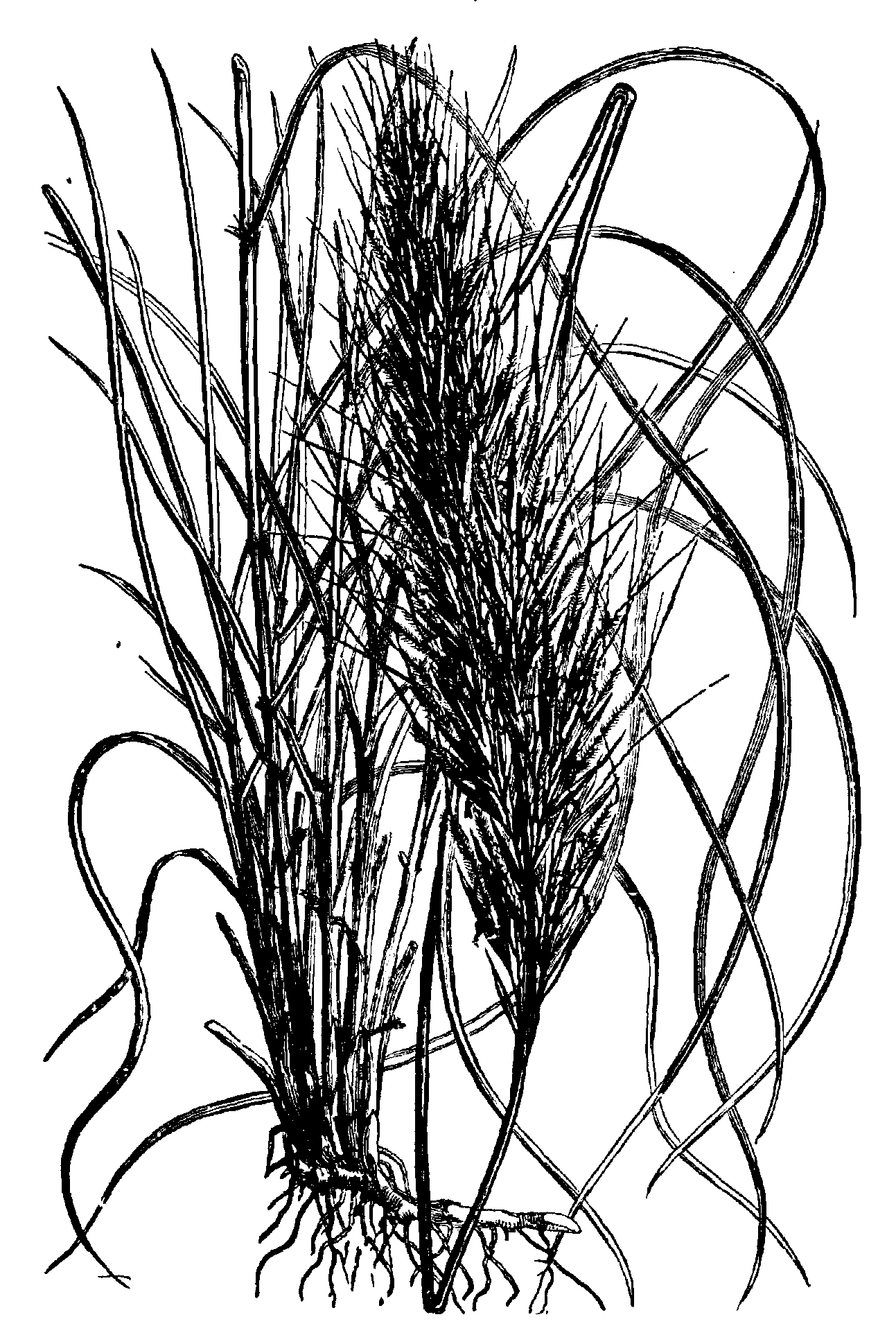Esparto Grass—Encyclopædia Brittannica
ESPARTO1, or Spanish Grass, Stipa tenacissima, a grass resembling the ornamental feather-grass of gardens. It is indigenous to the south of Spain and the north of Africa (where it is known as Halfa or Alfa), and is especially abundant in the sterile and rugged parts of Murcia and Valencia, and in Algeria, flourishing best in sandy, ferruginous soils, in dry, sunny situations on the sea coast. Pliny (N.H. xix. 2) described what appears to have been the same plant under the name of spartum, whence the designation campus spartarius for the region surrounding New Carthage. It attains a height of 3 or 4 ft. The stems are cylindrical, and clothed with short hair, and grow in clusters of from 2 to 10 ft. in circumference; when young they serve as food for cattle, but after a few years’ growth acquire great toughness of texture. The leaves vary from 6 in. to 3 ft. in length, and are grey-green in colour; on account of their tenacity of fibre and flexibility they have for centuries been employed for the making of ropes, sandals, baskets, mats and other articles. Ships’ cables of esparto, being light, have the quality of floating on water, and have long been in use in the Spanish navy.
Esparto leaves contain 56% by weight of fibre, or about 10% more than straw, and hence have come into requisition as a substitute for linen rags in the manufacture of paper. For this purpose they were first utilized by the French, and in 1857 were introduced into Great Britain. When required for paper-making the leaves should be gathered before they are quite matured; if, however, they are obtained too young, they furnish a paper having an objectionable semi-transparent appearance. The leaves are gathered by hand, and from 2 to 3 cwt. may be collected in a day by a single labourer. They are generally obtained during the dry summer months, as at other times their adherence to the stems is so firm as often to cause the uprooting of the plants in the attempt to remove them. Esparto may be raised from seed, but cannot be harvested for twelve or fifteen years after sowing.
Another grass, Lygeum Spartum, with stiff rush-like leaves, growing in rocky soil on the high plains of countries bordering on the Mediterranean, especially of Spain and Algeria, is also a source of esparto.
For the processes of the paper manufacturer esparto is used in the dry state, and without cutting; roots and flowers and stray weeds are first removed, and the material is then boiled with caustic soda, washed, and bleached with chlorine solution. Sundry experiments have been made to adapt esparto for use in the coarser textile fabrics. Messrs A. Edger and B. Proctor in 1877 directed attention to the composition of the slag resulting from the burning of esparto, which they found to be strikingly similar to that of average medical bottle glass, the latter yielding on analysis 66.3% of silica and 25.1% of alkalies and alkaline earths, and the slag 64.6 and 27.45% of the same respectively.
Footnotes
- 1 Esparto, Encyclopædia Brittannica, 1911


